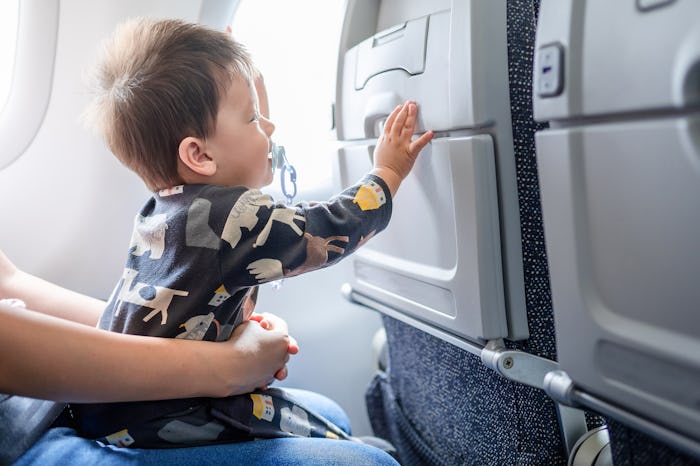News

Why Flight Attendants Want Airlines To Ban Babies From Sitting On Parents’ Laps
“The G-forces are not something even the most loving mother or father can guard against and hold their child. It’s just physically impossible.”
Flight attendants are once again voicing their concerns about babies sitting on the laps of parents or guardians on flights. More than 50,000 flight attendants represented by the Association of Flight Attendants (AFA) have called on legislators to ban airlines from allowing children 2 years old and younger to sit on laps and their reason has everything to do with protecting the safety of these little ones.
Last week, the AFA went to the Federal Aviation Administration (FAA) safety summit in Northern Virginia to bring up their list of concerns, and one of those listed was “a seat for every soul” on a plane. Which should not come as a surprise as the FAA states on its website, “The safest place for your child under the age of two on a US airplane is in approved child restraint system (CRS) or device, not in your lap. Your arms aren't capable of holding your in-lap child securely, especially during unexpected turbulence, which is the number one cause of pediatric injuries on an airplane.”
Still, the agency notes that while “children who have not reached their second birthday are permitted to travel as lap children, the FAA strongly discourages this practice and recommends that you secure your child in an approved CRS in their own seat for the entire flight.”
Indeed, several domestic airlines currently have a rule where children 2 and under can sit on the lap of a parent, or adult over the age of 16 years rather than having their own seat. And Sara Nelson, president of the AFA, recently explained to the Washington Post that her union has been trying to change the rule for more than 30 years because it is simply not safe. Especially when planes experience turbulence and little children are not strapped in with seat belts, instead relying on the adults to securely hold them.
“We’ve seen airplanes go through turbulence recently and drop 4,000 feet in a split second,” Nelson told the Washington Post. “The G-forces are not something even the most loving mother or father can guard against and hold their child. It’s just physically impossible.” Nelson referenced a flight out of Dulles Airport when an infant who was sitting on their parent’s lap was injured during turbulence.
The AFA pushed for this once again in 2019, 30 years after a United Airlines flight crashed in Sioux City, Iowa and killed 111 people, including an unrestrained infant. “On the 30th remembrance of United Flight 232, AFA again implores the FAA to rule that every passenger must have a seat with a proper restraint, regardless of age, and for lawmakers to take action to ensure this is implemented as soon as possible,” Nelson wrote in a press release at the time. “The current practice of merely recommending that infants and small children under the age of two be in child restraint seats (CRS) during critical phases of flight is inadequate to protect our most vulnerable passengers.”
Susan White, a flight attendant on United Flight 232, previously testified before Congress to share her harrowing experience. “As we prepared the cabin for an emergency landing, we helped parents wrap their babies in blankets on the floor,” White said at the time. “We had to tell mothers not to hold their children as we all faced certain danger. It was disturbing giving instruction knowing the child’s safety was in jeopardy by not being strapped into their own seat. I urge Congress to pass legislation to ensure every child has a safe seat on board.”
Flight attendants are not the only ones cautioning against children sitting on the laps of their parents on flights. The American Academy of Pediatrics also recommends that babies have their own seat, because “if there is turbulence, or worse, you may not be able to protect your baby in your arms.”
At this point, there is no regulation in place banning the continued practice of allowing babies to sit in their parents’ laps on flights. But flight attendants are working to change that.